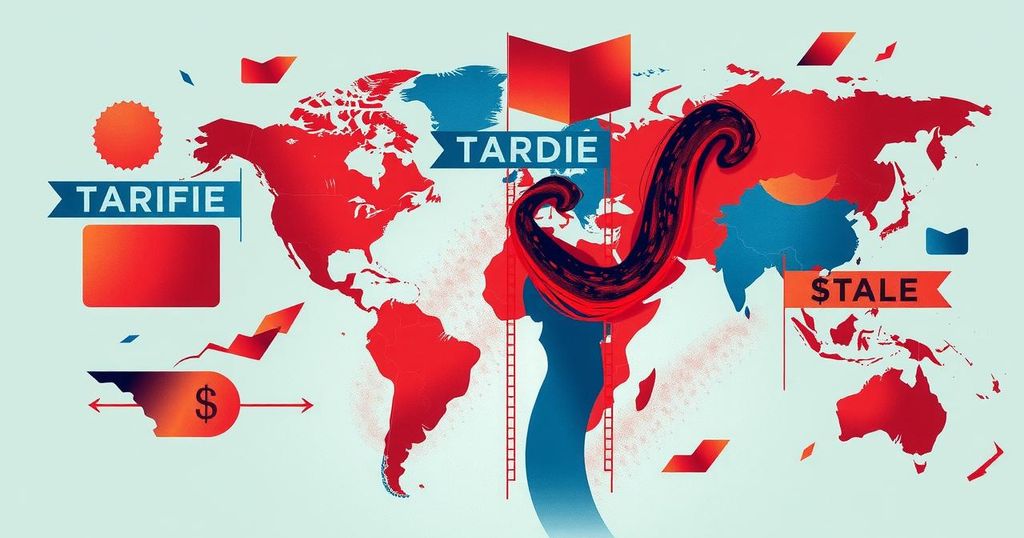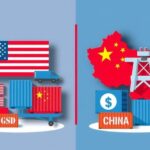The Impact of Trump’s ‘Liberation Day’ Tariffs on China and Global Trade
President Donald Trump has increased tariffs on Chinese goods to 54 percent, intensifying the ongoing trade war. China, heavily reliant on exports, faces significant economic challenges, including an ongoing debt crisis and low consumption rates. The tariffs are expected to impact both China’s GDP and U.S. manufacturers, illustrating the conflict’s broad repercussions. As Beijing considers retaliatory measures, the resolution of the trade dispute appears complex and protracted.
In response to President Donald Trump’s recent tariffs, which have increased levies on Chinese goods to 54 percent, the trade war between the United States and China deepens. This new development raises concerns over the potential crippling effect on global supply chains, impacting not only China but also interests within the United States.
China’s economy, heavily reliant on exports, is particularly vulnerable to fluctuations in international trade. Data from Beijing indicates that exports to the United States accounted for over $500 billion, approximately 16.4 percent of China’s total exports last year. The latest tariffs are poised to jeopardize China’s already fragile economic recovery amid an ongoing debt crisis in the property sector and low consumption rates. While fiscal stimulus measures were introduced, the intensified trade conflict may undermine their effectiveness in fostering economic growth this year.
The new tariffs, which began with a 10 percent increase and will fully implement by April 9, significantly target China’s substantial trade surplus with the United States. Current tariffs add an additional 34 percent to an existing 20 percent rate, putting immense pressure on various sectors. Analysts predict that this could trim 0.5 to 1 percent off China’s GDP, which the government hopes to maintain at 5 percent growth this year. The most affected industries include electronics, textiles, and machinery, which are critical exports to the U.S.
Experts also highlight that the impact of these tariffs extends beyond China, affecting U.S. manufacturers and consumers alike. Given that imports from China include essential capital goods and industrial materials, the repercussions will be felt across the supply chain, including within U.S. industries. Chen Wenling, Chief Economist, warned that the trade conflict jeopardizes the global trade system.
In retaliation, Beijing’s specific countermeasures remain unclear. However, potential strategies may involve increasing pre-existing tariffs on U.S. goods. Mei Xinyu, an economist, outlined the necessity for these responses to be strategic and measured to avoid a complete economic decoupling from the U.S. Recent actions include imposing tariffs on U.S. coal and liquefied natural gas, targeting key support bases within Trump’s constituency. Despite expressing a desire for dialogue, analysts like Betty Wang emphasize that resolution will take time, with historical data suggesting tariffs rise quickly but fall slowly.
In conclusion, the implementation of Trump’s ‘liberation day’ tariffs introduces significant challenges for China’s economy, which is already facing hurdles due to low consumption and a debt crisis. The increase in tariffs exacerbates this economic landscape and threatens growth. Furthermore, the impact of these tariffs reaches beyond China, affecting U.S. manufacturers and consumers, ultimately endangering the broader global trade system. Future retaliatory measures from Beijing may prolong the conflict, underscoring the complexity of resolving U.S.-China trade relations.
Original Source: www.news-graphic.com








Post Comment